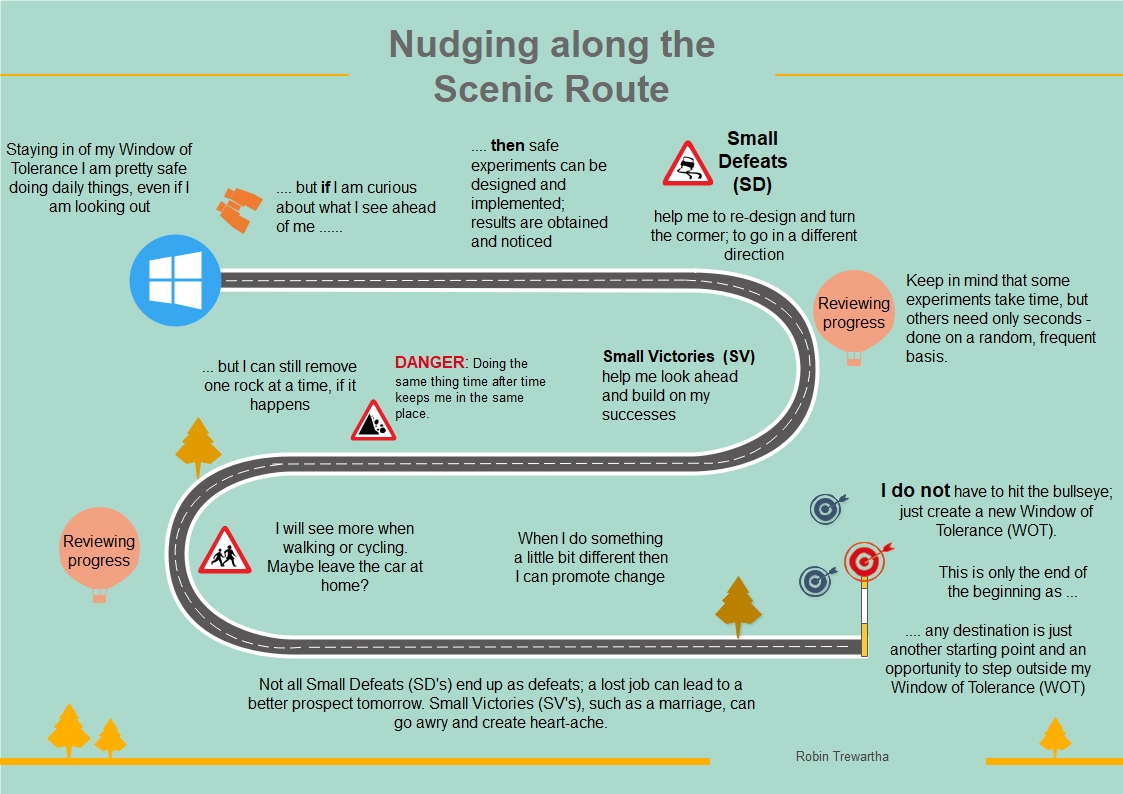Starting behind The Window of Tolerance (WOT)
At this time, now, you may well be sitting indoors – a familiar environment with familiar experiences. You are able to look out of your window of tolerance.
That should be a safe place, although this is not always so.
As you look outside, you may see a number of routes you could follow – should you step outside the door. If you do step outside, you may accept support from other people; friends, family or professionals.
If it’s friends and family, you might want to make a note of who they are and your place in their lives.
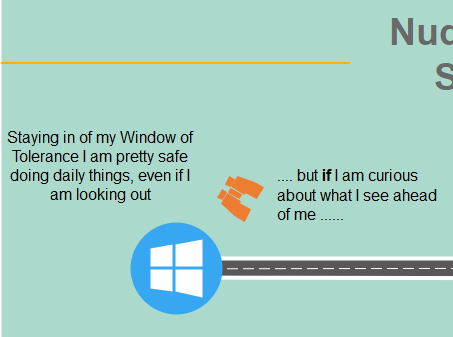
The Starting Block, or a staging post
There are a few leads to explore at:
What helps if I look for professional help?
If you step outside and start a journey, then I suggest doing so using small steps or safe-to-fail experiments.
Stepping out of the door – is an important small victory. Even tripping over can be a potentially helpful early experience.
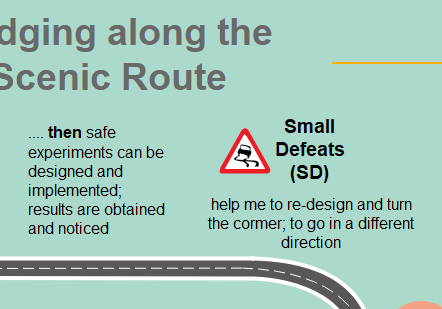
At the beginning of a journey we may lack confidence and experience.
Therefore, the first ‘lessons’ from our journey are often small defeats. There are a few leads to follow on this topic:
My letter to you at this early stage
The body can take care of itself
Designing an action that works for you
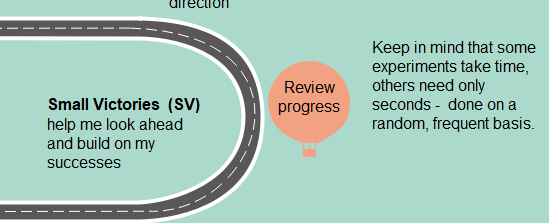
Small victories and small defeats
Both ‘results’ on our journey help us keep on the straight and narrow, as well as navigate around corners. Here a few more leads you can follow:
Exploring what I might do differently
Small Victories and Small Defeats
Designing an early safe experiment
Responding to obstacles you might meet
Turning an obstacle into another small victory
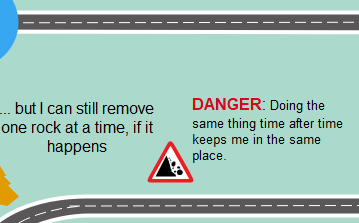
Anxiety about the possibility of obstacles may become another obstacle!
Here problems can arise and be difficult to resolve. Even noticing the problems makes them more visible and more troubling. Just thinking about them can make it worse.
Sometimes we seem unable to see what is obvious, and immediately in front of us.
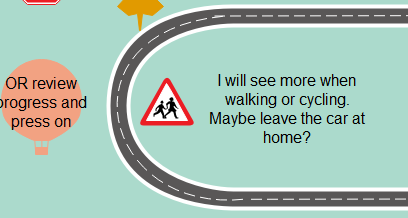
Slowing down can help
Sometimes I am keen to get on but rushing can mean I fall over myself. I can benefit from looking to my left and right. That way, small victories and small defeats can pass by, some unnoticed, if I am not watchful.
As it’s not a good idea to miss things, it pays me to take care and to note the smallest thing. Victories and defeats can be very fleeting.
Turning a blind eye to developments might reduce the pain, but it misses an opportunity.
Motivating myself when I am tired
Reviewing progress to change direction or to improve my ability to just notice things
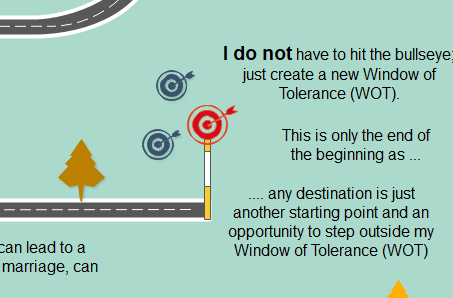
Getting there, or preparing to move on once again
The destination does not have to be pre-determined. It may emerge from the mists during the journey. It may alter in the last furlong. Whatever that destination, it is likely to offer you a new beginning.
Further leads
The overall picture of the scenic route.
Types of safe experiments to use on the scenic route
An alphabetical index of all pages on Your Nudge
THE END
…. hmm or AN END?
….. maybe just ONE END
…. seems like PART of an END?
Oh, I know …… ONE OF SEVERAL ENDS

What does your destination look like?
